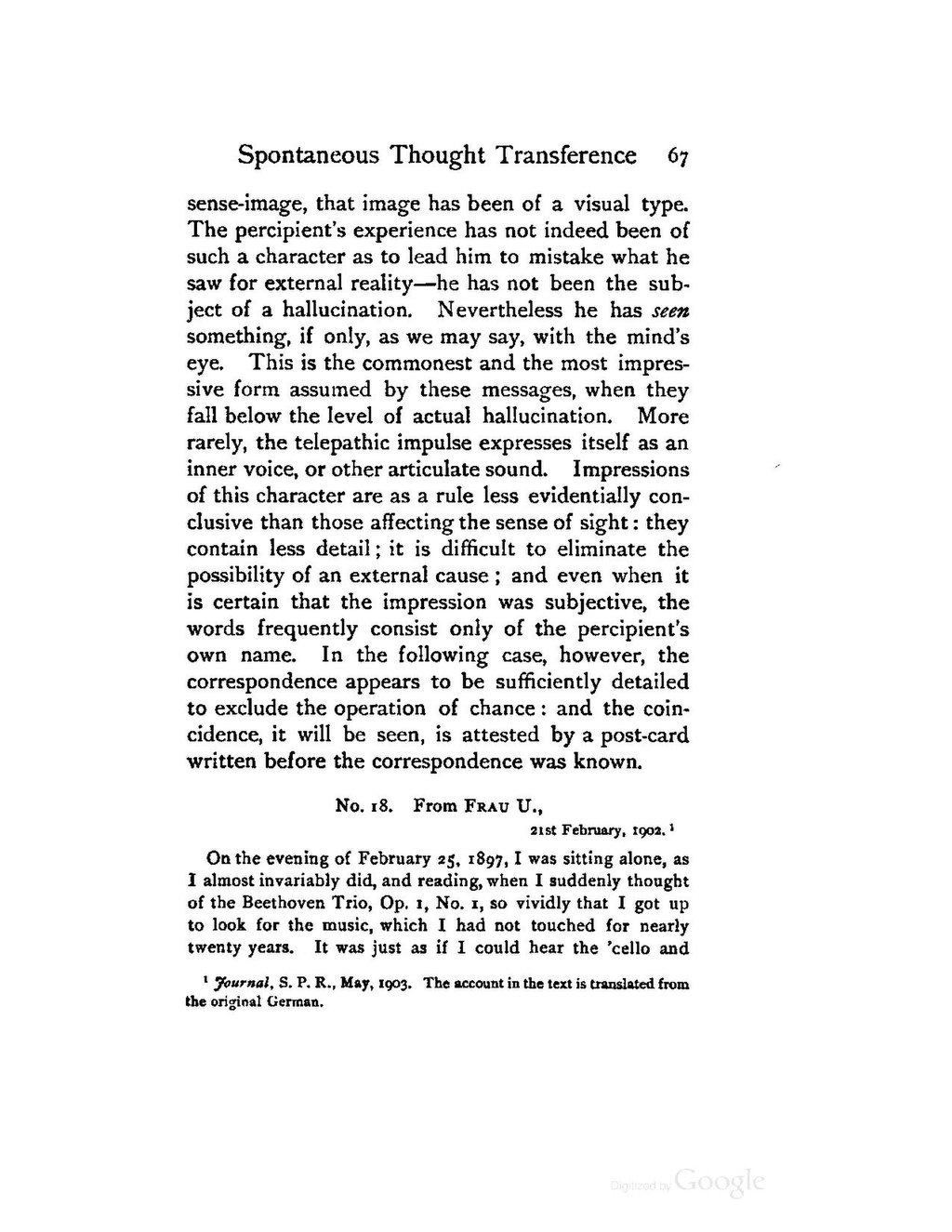sense-image, that image has been of a visual type. The percipient's experience has not indeed been of such a character as to lead him to mistake what he saw for external reality—he has not been the subject of a hallucination. Nevertheless he has seen something, if only, as we may say, with the mind's eye. This is the commonest and the most impressive form assumed by these messages, when they fall below the level of actual hallucination. More rarely, the telepathic impulse expresses itself as an inner voice, or other articulate sound. Impressions of this character are as a rule less evidentially conclusive than those affecting the sense of sight: they contain less detail; it is difficult to eliminate the possibility of an external cause; and even when it is certain that the impression was subjective, the words frequently consist only of the percipient's own name. In the following case, however, the correspondence appears to be sufficiently detailed to exclude the operation of chance: and the coincidence, it will be seen, is attested by a post-card written before the correspondence was known.
No. 18. From Frau U.,
- ↑ Journal, S. P. R., May, 1903. The account in the text is translated from the original German.
